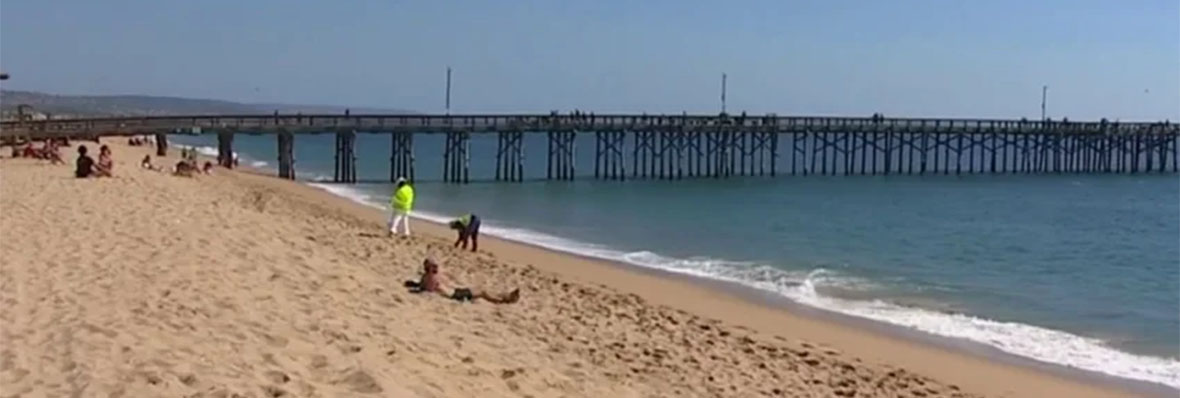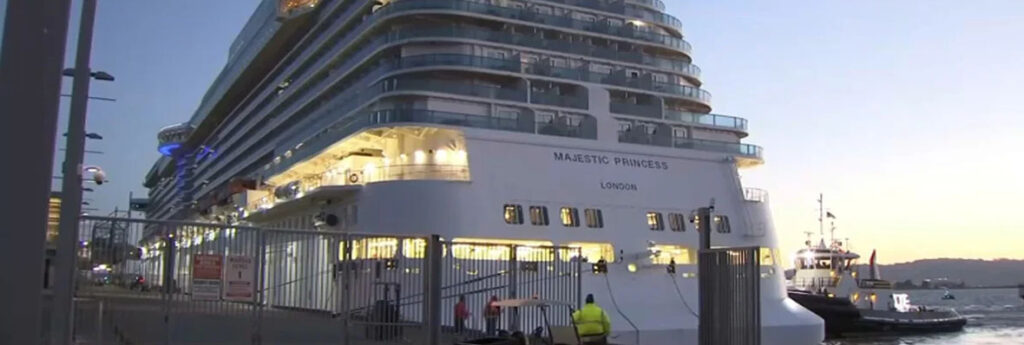The Majestic Princess sailed into the port of San Francisco on Monday, the first cruise ship to dock in the San Francisco Bay Area since March 2020. The port of San Francisco, home to the Bay Area’s only passenger cruise terminal, expects to welcome 21 cruise ships through the remainder of the year, which is a welcome boost to the city’s economy as it emerges from the pandemic.
The cruise ship terminals are near some of the most famous landmarks in the city, including Fisherman’s Wharf, Pier 39 and the Ferry Building. When the largest cruise ships dock, there can be over 6,000 passengers, crewmembers, and terminal workers who disembark and dine and shop in the area.
The Majestic Princess was sailing from Los Angeles on a weeklong California coast voyage that included an overnight stop in San Francisco.
Passengers were required to show they were vaccinated at least 14 days before embarking on the cruise and have proof of vaccination. They also needed a negative COVID-19 test taken within two days of their embarkation, according to a statement from Princess Cruises, a Carnival Corp. subsidiary that operates the vessel.
Cruises elsewhere in the US began returning to business in June following a lengthy hiatus that saw the Centers for Disease Control and Prevention repeatedly extended no-sail orders as the pandemic raged. Carnival, Norwegian and Royal Caribbean, the three largest cruise companies, collectively lost US$20 billion last year and another $4.5 billion in the first quarter of 2021, according to Securities and Exchange Commission filings.
Oil spill

Meanwhile, a Southern California beach that was closed more than a week ago because of a leak of crude oil from an undersea pipeline reopened on Monday, far sooner than many expected.
City and state beaches in Huntington Beach reopened after water quality tests revealed no detectable levels of oil associated toxins in the ocean water. Early Monday morning, surfers bobbed in the waves and people walked along the shoreline, some with dogs jumping and playing in the water.
Huntington Beach and nearby coastal communities have been reeling from the Oct. 2 spill that officials said sent at least about 95,000 litres of oil into the ocean. It was caused by a pipeline leak about 8 km off the coast. The cause is under investigation and officials said they believe the pipeline was likely damaged by a ship’s anchor several months to a year before it ruptured.
On Sunday, there was no smell of oil and the sand looked largely clear by the Huntington Beach pier, where workers combed the sand for tar.
Officials in the city of 200,000 people, dubbed Surf City USA, have been testing the water to ensure it’s safe for people to go back in the water and said they’ll continue the testing for at least two more weeks.
Before Monday, residents were allowed to walk on the sand in Huntington Beach but were prohibited from the shoreline and the water. Popular surfing and swimming spots in Newport Beach and Laguna Beach were also closed.
In Huntington Beach, shops selling everything from bikinis and stars-and-stripes boogie boards to sand toys and fishing gear took an economic hit during the closure. Marian Johnson, who owns “Let’s Go Fishing” on the pier, said sales have been halved since the spill.
Mike Ali, who owns the nearby shop Zack’s, said he had to close three of his four locations and reduce workers’ hours. People were still renting bikes and buying food at his one store that remained open, but he said business dropped 90% without surf lessons, event catering and beach bonfires.
“It could be a year to two years to get the tourism to come back,” Ali said, adding that a 1990 oil spill wound up diverting would-be visitors to beaches south and north of the city.
Since the spill, officials have reported 38 dead birds and nine dead fish, while 27 oiled birds have been recovered and are being treated.
On Sunday morning, only a handful of people played beach volleyball on Huntington Beach while a few others exersized or laid on the sand.

